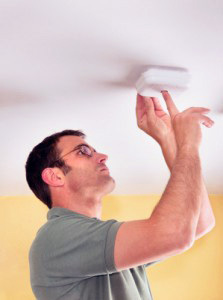CO detectors required in all NY dwellings
Amanda’s Law takes effect
Teenager Amanda Hansen was sleeping overnight at her friend’s home in January, 2009. She never woke up the next morning. Her life ended tragically that night by a carbon monoxide leak from a defective boiler.
The New York State Legislature has passed “Amanda’s Law,” which establishes a new requirement for installation of carbon monoxide (CO) detectors in homes.
Under the new law, which takes effect Feb. 22, one and two-family homes, and dwellings located in condominiums or cooperatives, as well as multiple-family dwellings, must have a carbon monoxide detector installed regardless of the date of construction or sale of the residence. Prior to this new law, carbon monoxide detectors were only required in newly-constructed single, two family, and condos built after July 30, 2002. This was followed up by adding multiple dwellings, hotels and dormitories if they were constructed or offered for sale after August 9, 2005. Now all residential structures in the state of New York will need to have a carbon monoxide detector.
Carbon monoxide is the number one cause of poisoning death in America. It’s an odorless, invisible, and extremely dangerous gas which can be given off by most common appliances in a home or from a car in an attached garage. CO cannot be seen or smelled, but at high levels if can kill a person in minutes. Hundreds of people die each year in the United States from CO poisoning caused by malfunctioning or improperly used fuel-burning appliances (open flames, space heaters, water heaters, boilers, and blocked chimneys.) People have also died from CO emissions come from idling cars in attached garages.
The detectors are designed to measure CO levels and sound an alarm before dangerous levels accumulate. They give people adequate warning to safely ventilate the area or evacuate the residence.
According to the National Fire Protection Association, all CO detectors should be be centrally located outside of each separate sleeping area in the immediate vicinity of the bedrooms, and each detectors shall be located on the wall, ceiling or other location as specified in the installation instructions that accompany the unit.






